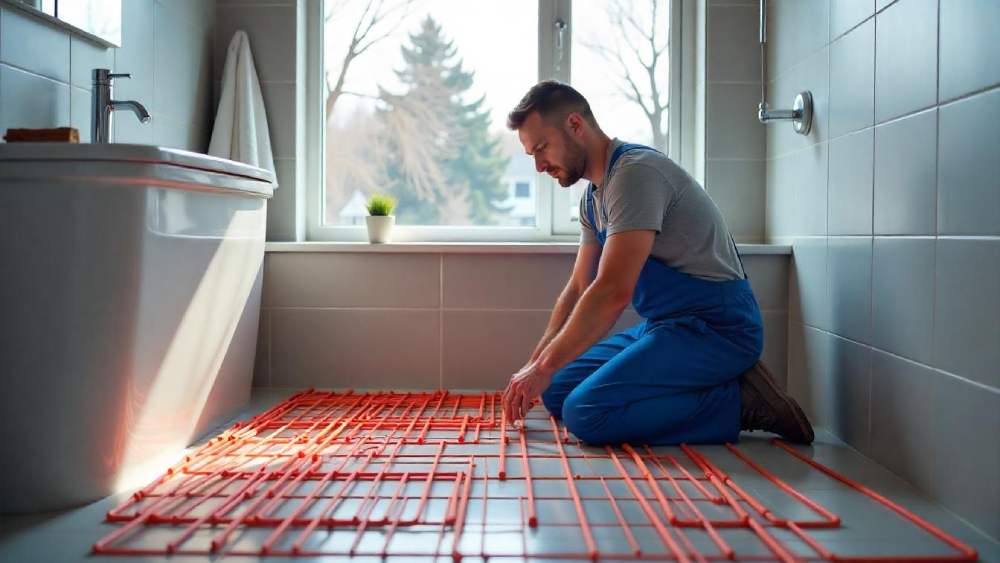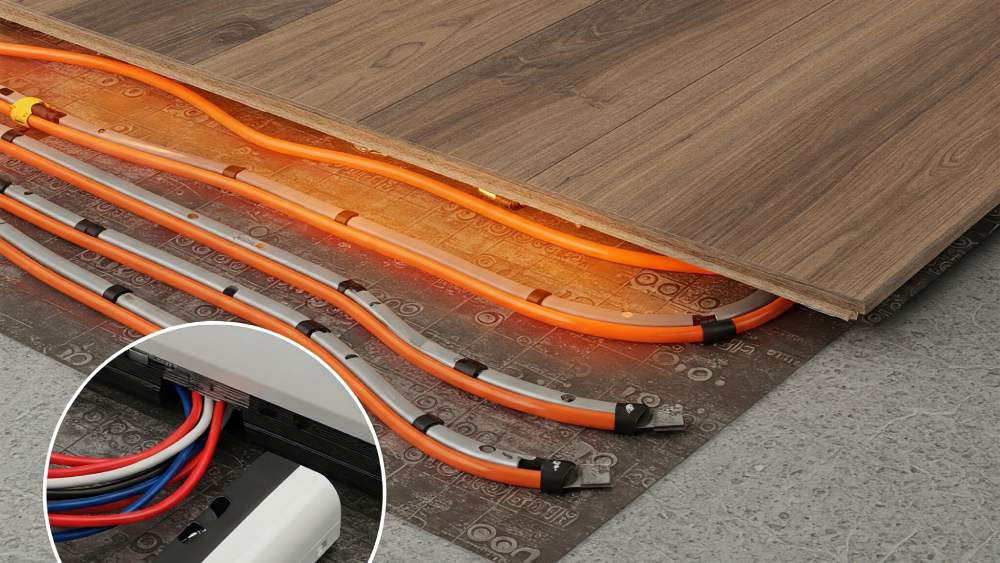Underfloor heating (HFU) is an increasingly popular home heating method with high energy efficiency. This heating solution needs a suitable flooring type to work best, and you need to choose the right flooring type to maximize the efficiency and longevity of your underfloor heating system. In this article, you will read more about different flooring types and their efficiency in the underfloor heating method.
Choose the most heat-conductive flooring for underfloor heating
The flooring material you choose can significantly impact the effectiveness of the underfloor heating system. Therefore, it is crucial to choose the right material if you decide to have an HFU system at your place. Here is a list of the best flooring materials that maximize the effectiveness of the heating system:
- Tile and stone flooring
- Engineered wood flooring
- Luxury vinyl flooring
- Laminate flooring
Below, you will read more about each of the materials mentioned above in detail and how they can help the underfloor heating system.
1. Tile and stone flooring for underfloor heating: Best for heat retention
Tile and stone flooring are some of the best choices for underfloor heating. They are highly heat conductive and can keep the heat for longer periods, making them an energy-efficient option. In addition, they are moisture resistant and highly durable, so they can be easily used in any space, especially perfect for kitchens and bathrooms. Here are some stone and tile flooring suggestions suitable for an underfloor heating system:
- Ceramic tiles: Affordable, stylish, and widely available.
- Porcelain tiles: More durable and resistant to wear and tear.
- Natural stone: Provides a premium appearance with excellent heat retention.
- Marble flooring: Luxurious and visually appealing, though it requires more maintenance.

2. Engineered wood flooring for underfloor heating: A stable and stylish option
Unlike solid wood, engineered wood flooring can withstand temperature changes. Engineered timber flooring provides a natural and warm wood appearance while allowing heat to pass through the floor.
Here are some of the engineered wood flooring suggestions:
- Oak engineered wood: A popular choice due to its durability and classic look.
- Hickory engineered wood: Offers a strong and stable structure.
- Walnut engineered wood: Provides a rich and elegant finish.
- Maple engineered wood: Known for its smooth and modern appearance.
3. Vinyl flooring with underfloor heating: Affordable and efficient
The next flooring option that is suitable for underfloor heating is vinyl flooring. It is known for its durability, longevity, and flexibility. Vinyl flooring is a great heat conductor and can provide a natural wood appearance to any space while it is more affordable and easy to maintain. Here are vinyl flooring types that are suggested to be used with an underfloor heating system setting:
- Vinyl planks: These simulate hardwood flooring while being moisture-resistant.
- Vinyl tiles: Can simulate stone or ceramic tiles with added comfort.
- SPC (Stone Plastic Composite) vinyl: Offers improved stability and durability.
- WPC (Wood Plastic Composite) vinyl: Provides a softer underfoot feel with good heat keep.
4. Laminate flooring for underfloor heating: Budget-friendly with moderate conductivity
Laminate flooring is another flooring option to be used with an underfloor heating system. It is a more affordable choice compared to vinyl or tile flooring and offers moderate thermal conduction. Although laminate flooring cannot keep the heat as well as stone or engineered wood, it can provide a suitable level of heat retention while creating a warm wood appearance in any space. Here are types of laminate flooring that can be used for an underfloor heating system:
- Standard laminate: A widely available and economical choice.
- High-pressure laminate (HPL): More durable and resistant to moisture.
- Waterproof laminate: Suitable for areas prone to spills or humidity.
- Textured laminate: Provides a more realistic wood or stone feel.

Key factors to consider when choosing flooring for underfloor heating
Before selecting a flooring type for underfloor heating, it is important to consider some factors that are essential in a flooring’s performance and effectiveness when it is used with an underfloor heating system. Here are some key factors:
- Thermal conductivity: This refers to how quickly flooring materials can transfer heat. The higher the thermal conductivity, the more efficient the flooring is.
- Subfloor material: The type of subfloor material (concrete or wood) can affect the heat distribution and subfloor heating efficiency.
- Flooring thickness: Thinner flooring materials allow the heat to pass through easily and more effectively.
- Insulation properties: Flooring types with less thermal resistance ensure efficient heat transfer and less energy loss.
- Heat-up time: Flooring materials have an important impact on how fast the underfloor heating system warms up the area and distributes it.
In addition to all the key factors mentioned above, it is essential to consult flooring professionals before making any decision about the best flooring type for an underfloor heating system. Flooring service providers like MA Flooring in Melbourne provide you with useful and professional information about all the flooring choices and guide you on how to choose the best option considering your goal, budget, and interest.
Conclusion
Underfloor heating is a common heating system these days that is known for its energy efficiency. This modern heating solution can have different results based on the flooring type that is used at your property. Flooring options like engineered timber wood, stone, tile, and vinyl flooring are perfect options to come with underfloor heating, while providing a natural beauty and easy maintenance to you. Deciding between these alternatives depends on different factors, including your budget, appearance preference, and, of course, the energy efficiency they can provide.

